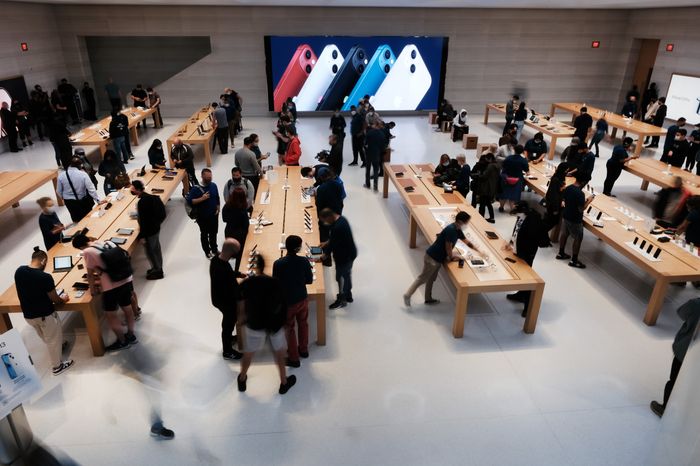Among the expected new features are a different connector cord, a new button—and a higher price

Apple is holding its annual hardware refresher on Tuesday at its headquarters in Cupertino, Calif. The event, which Apple has titled "Wonderlust," will focus on updating some of its existing product lineup, most importantly the iPhone.
The Apple event, beginning at 1 p.m. EDT, is also expected to launch new versions of its Apple Watch, but most of the attention will likely be going toward the iPhone. The presentation will be streamed on Apple's website and on YouTube.
There likely will be four new iPhones, two base models and two higher-priced Pro versions, analysts familiar with the company's supply chain expect. The latest and most advanced features of the new iPhones -- expected to be called the iPhone 15 -- will reside mostly with the Pro segment, as has been the case for several years now.
Apple isn't expected to unveil any new types of hardware categories at the event. Apple in June introduced the Apple Vision Pro, a virtual-reality headset that allows users to view digital content in their physical spaces. That product isn't shipping to customers until next year.
Although Apple has been quickly trying to diversify its business over the past few years, the iPhone still accounts for around half of its overall sales. Apple is looking to turn around its slipping iPhone business. In the most recently reported quarter ended July 1, iPhone revenue declined 2.4% to $39.7 billion, missing analysts' estimates.
Apple is also facing more pressure in China, its third-largest market. The Chinese authorities in recent weeks have asked government employees to not use iPhones for work, The Wall Street Journal reported last week. Huawei Technologies also introduced a new phone that will give Apple more competition in the high end of the Chinese smartphone market, where Apple currently dominates. In the coming year, analysts expect the combo of the two events will eat into Apple's China business.
Here are five things to watch for as Apple unveils its next iPhone, according to analysts.
1. USB-C
Both the Pro and base models of the iPhone 15 are expected to transition to a new connector port, moving away from its proprietary Lightning connector that has been in use since 2012 with the iPhone 5. Apple will at last be embracing USB-C, a common connector standard found in many consumer electronics, including rival Android phones.
With the move to USB-C, Apple is complying with European Union legislation that the company previously opposed. "Obviously, we'll have to comply," Greg Joswiak, Apple senior vice president of worldwide marketing, said at The Wall Street Journal's Tech Live conference last year.
2. Price
The smartphone market has slowed down in recent years, and Apple has responded by trying to entice buyers to buy its more premium segment Pro iPhones. Up until recently, the strategy has worked well, with booming sales and profit.
But Apple's iPhone business is slowing again, so now the company is expected to see how far it can push this strategy. Analysts are expecting the Pro lineup of the iPhone 15 could increase prices by $100 or potentially even $200. Last year's iPhone 14 Pro started at $999, and the larger Pro Max began at $1,099.
3. Satellite
A popular feature to come out of last year's iPhone 14 was the added functionality of satellite communication. The feature has been limited for now, with satellite connectivity only being used for sending messages to emergency services when the user is outside of cellular wireless coverage.
Many in the industry are waiting to see if Apple expands those satellite capabilities. Apple's main China competitor, Huawei, launched a phone last week that advertised the ability for users to make calls, not just messages, in areas without traditional mobile coverage.
4. Chipset
The iPhone 15 Pro is expected to be powered with a new custom chipset designed in-house by Apple engineers and manufactured on Taiwan Semiconductor Manufacturing's latest 3-nanometer chip fabrication process. As typical with an updated Apple chip, it will enable speedier performance and greater energy efficiency with the iPhone 15 Pros.
The two iPhone 15 base models, on the other hand, are expected to come with last year's chip, the A16 Bionic processor. Apple began providing its Pro phones exclusively with its most advanced chips last year with the iPhone 14 generation.
5. Button
Apple will likely mix up a feature found in every iPhone since the very beginning: the mute switch. In place of the switch, the Pro models will likely have a simple button that can be programmed by users to perform certain actions, such as quickly opening the camera app or turning on the flashlight. It is a similar function to one first found in the Apple Watch Ultra released last year.
Comments